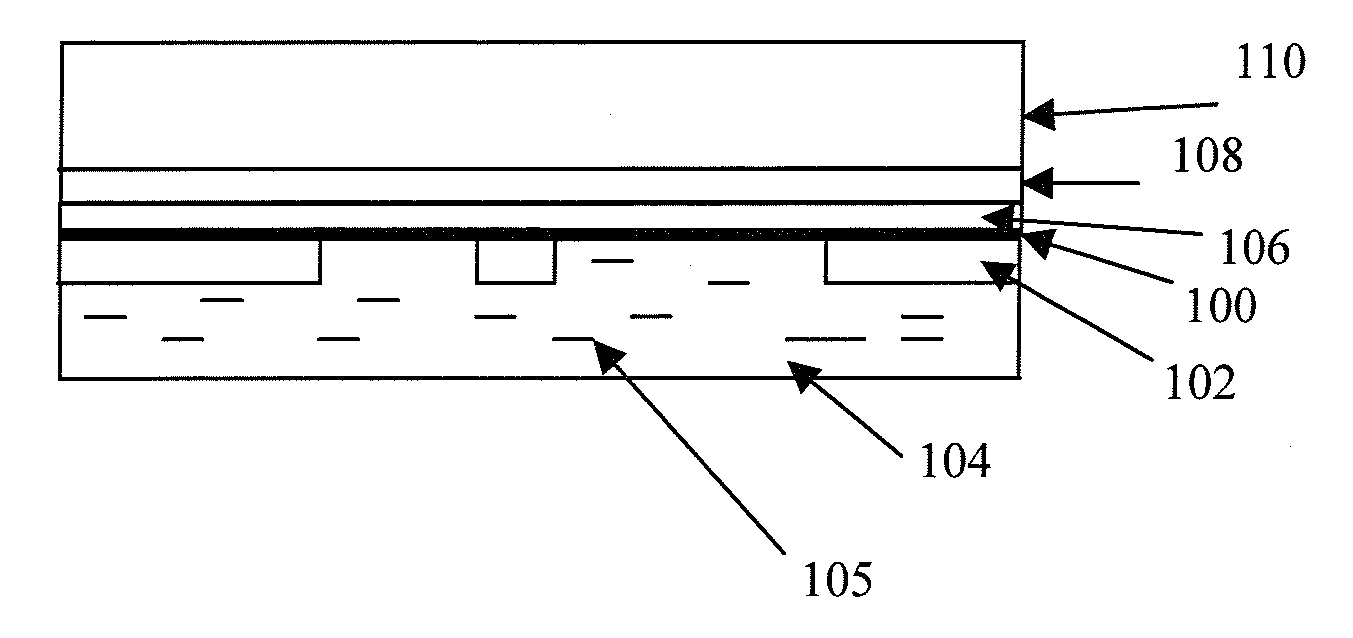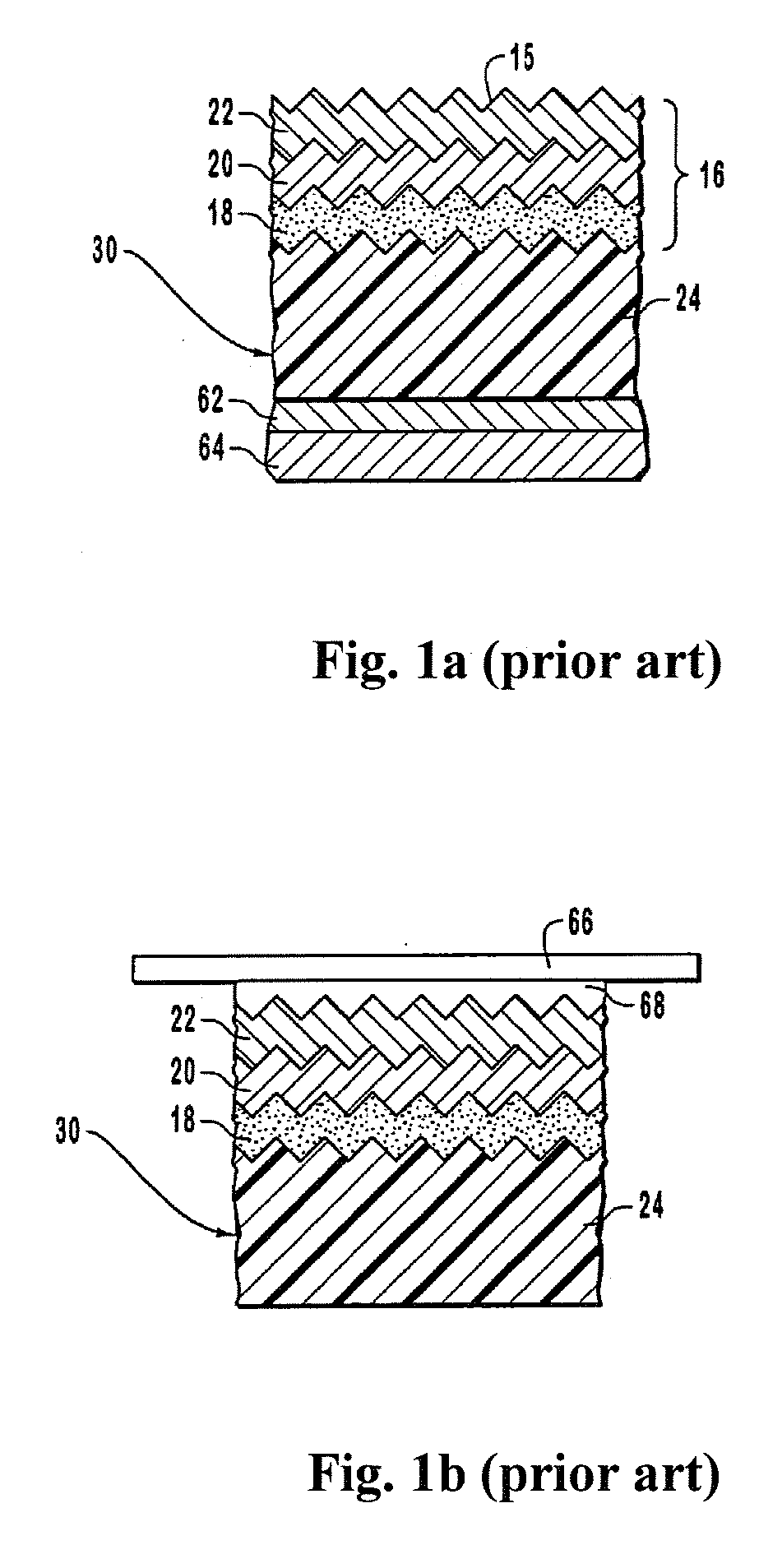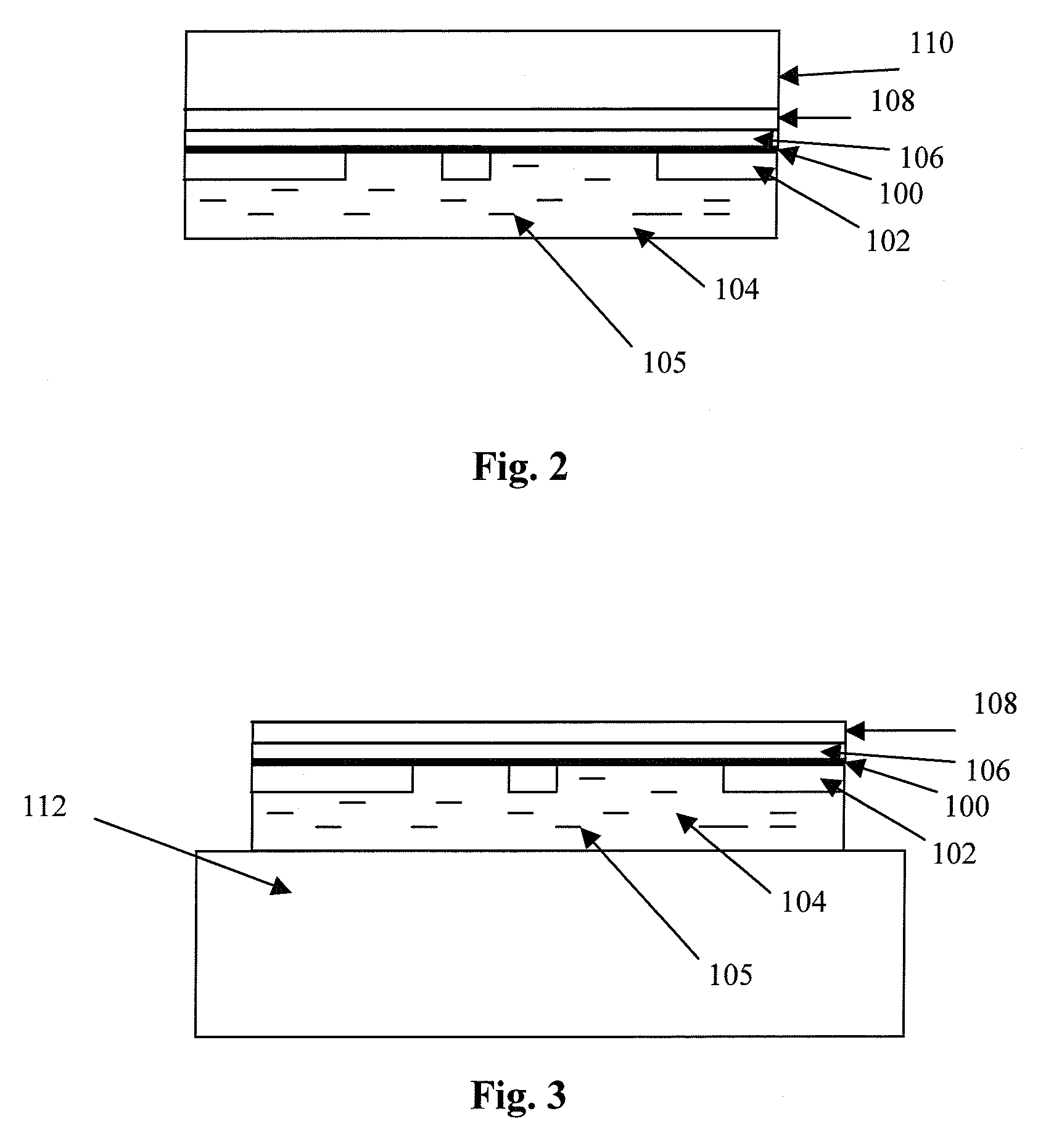Security Devices Incorporating Optically Variable Adhesive
a technology of adhesive and security device, applied in the field of hotstamping, can solve the problems of not providing additional functions, adhesive becomes tacky, and unaffected light passing through,
- Summary
- Abstract
- Description
- Claims
- Application Information
AI Technical Summary
Benefits of technology
Problems solved by technology
Method used
Image
Examples
Embodiment Construction
[0066] For the purpose of this application, the term “energy activated adhesive” or “energy activated binder”, means a bonding substance that requires an energy source for curing. The energy activated adhesives include, but are not limited to, hot stamp adhesives, UV activated adhesives, thermoplastic and thermoset adhesives, paint-based polymeric compositions, varnishes, and staining compositions. By way of example, an adhesive is selected from the group of: polymethacrylate, polyacrylate, polyamide, nitrocellulose, alkyd resin, polyvinyl alcohol, polyvinyl acetate, and polyurethane.
[0067] The methods of activating the adhesives include hot stamping, UV curing, applying heat, or a beam of electrons. For brevity, an energy activated adhesive, possibly with special flakes therein, is referred to as “an adhesive” hereinbelow where it does not lead to confusion.
[0068] As was described heretofore, in the background of the invention, the field of hot stamping and more particularly, hot...
PUM
| Property | Measurement | Unit |
|---|---|---|
| length | aaaaa | aaaaa |
| thick | aaaaa | aaaaa |
| optical density | aaaaa | aaaaa |
Abstract
Description
Claims
Application Information
 Login to View More
Login to View More - R&D
- Intellectual Property
- Life Sciences
- Materials
- Tech Scout
- Unparalleled Data Quality
- Higher Quality Content
- 60% Fewer Hallucinations
Browse by: Latest US Patents, China's latest patents, Technical Efficacy Thesaurus, Application Domain, Technology Topic, Popular Technical Reports.
© 2025 PatSnap. All rights reserved.Legal|Privacy policy|Modern Slavery Act Transparency Statement|Sitemap|About US| Contact US: help@patsnap.com



